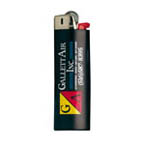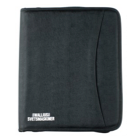

Most people can agree that any meaningful wedding or birthday party wouldn’t be complete without a bunch of balloons. They’re a world famous party item and have been for a variety of events, product launches and celebrations. And while they enchant us, most of us don’t really know where modern day balloons came from. That’s what we are going to discuss in the sub-sequent sections of this article.
Where Did Balloons Come From?
First of all, the word “Balloon” is French derived and basically means “huge ball”. It also carries the same basic meaning in both Latin as well as German. As far as records show, the earliest known balloons were constructed from the intestines of animals and on occasion, their bladders. They were more common used for entertainment purposes and often used by clowns.
Historians believe that the first balloons came into existence because of a man named Bartolomeu De Gusmao. The year was 1824 in a region known as Lisbon. This is where he made the balloon for a public gathering. Around the same time, a man named Michael Faraday came up with a formula that created the first rubber balloon. He eventually filled this balloon up with hydrogen, eventually calling it the “Cauotchouc”.
Death of Hydrogen Filled Balloons
For a long time after, balloons were filled with hydrogen gas. However, it was quickly discovered that hydrogen was incredibly dangerous. More specifically, it was very flammable and was simply too dangerous to be used on a large-scale basis.
As a result, the hydrogen filled balloons was replaced with helium gas. This was because helium was not flammable and wasn’t toxic either. It was a much better option than hydrogen gas. And it wasn’t until the 1970s when another major breakthrough was made.
1970s – A More Durable Solution for Balloons
Throughout the 1970s, a more durable solution was discovered for the construction of balloons. More specifically, aluminum films coated in plastic were used as they were more durable and didn’t allow helium to escape as easily. As a result, they could be used for longer periods of time.
Unfortunately, researchers later discovered that this material wasn’t as flexible as previous materials used to construct the balloon. They wanted to create a solution that wouldn’t allow helium atoms to escape as quickly. They also wanted to make sure that the balloons would remain flexible and durable throughout the process.
Major Breakthrough in Balloon Science
After decades of experimenting with different materials for balloons, researchers began to experiment on hot-air balloons. While they were incredibly more complicated, builders already had a firm understanding about the fundamentals of balloons. As a result, there was far less trial and error involved.
The first hot-air balloon was created in France by two brothers (Etienne Montgolfier and Joseph Montgolfier). To construct their balloon, they used cloth that was lined with paper. From there, they used a fire to light the material and the results were astonishing: they were able to float for nearly a mile and a half before landing. It was the first major breakthrough of balloons science in a very long time.
Conclusion
On November 21st, 1981, a man named Ben Abruzzo partnered with another pair of researchers named Ron Clark and Larry Newman. Together, they became the first crew to take a balloon over the Pacific Ocean. It was another major breakthrough in the field of balloon science and engineering. Today, balloons are used for all kinds of purposes including the entertainment and as decorations for major celebrations. They’re also more durable than ever, and come in thousands of sizes and colors.











